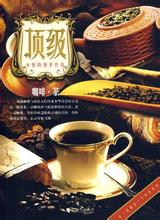Colombian coffee taste manor features boutique Coffee Hope Manor introduction
After the founding of the United States, there was a dispute over the location of the capital. The North wants its capital in new York. The South wants the capital to be located in the South. Finally, the United States and North Korea made a decision
Flag of Washington, D.C. Colombia
Flag of Washington, D.C. Colombia
Concession, a new city in the south of the United States not far from the north as the capital of the United States. The location was established by James Madison (1751-1836, fourth president of the United States) and Alexander Hamilton (January 11, 1757-July 12, 1804, one of the drafters of the Constitution and the first Secretary of the Treasury of the United States) under Thomas Jefferson (April 13, 1743-July 4, 1826), third president of the United States. He was also the chief drafter of the American Declaration of Independence. The city was planned as a diamond of 100 square miles. Its actual location on the Potomac River was decided by President Washington, who himself suggested that the U.S. capital be called "Federal City." But on September 9, 1791, the capital of the United States was named Washington. Washington himself rarely visited Washington, though he lived in Mount Vernon, not far from Washington.
Washington was planned by Major Pierre L. Enfant, who also designed the Confederation Hall in New York. the planning at the time
Seal of Washington, D.C., Colombia
Seal of Washington, D.C., Colombia
Based on horse-drawn carriages as the primary means of transportation, Washington's road system is not suited to modern automobile transportation. Washington is currently considered the worst city in the United States for road traffic. 1791-1792 Andrew Ellicott and African-American freeman Benjamin Banneker surveyed the boundaries of the District of Colombia, planting markers every mile. Many of these pillars still exist. October 13, 1792 The foundation stone was laid for the White House. On August 24, 1814, British troops captured the District of Colombia during the War of 1812 and burned most of its public buildings. The American army failed to organize an effective defense and fled after burning down the naval shipyard. British troops burned down U.S. government buildings such as the U.S. Parliament, the White House and the Treasury. It is generally believed that the British burned Washington in retaliation for the American invasion and the burning of Toronto (then known as York). But British operations were limited to public buildings, while American forces destroyed many homes when they burned Toronto, causing many Canadians to sleep on the streets during the winter. In 1847, the land on the south bank of the Potomac River was returned to Virginia. Washington was a small city inhabited by only a few thousand people until the Civil War. After the outbreak of the American Civil War, due to the needs of war, the U.S. government expanded rapidly, and Washington residents increased significantly.
The first part is the triangle in the background, which symbolizes the Andes and also implies that the Arabica coffee in Colombia coffee is grown in high-altitude mountainous areas. As we all know, Colombia's main coffee producing areas are distributed in three mountain ranges arranged in the word "Sichuan", which belong to part of the Andes. According to the geographical environment and climate, the characteristics and flavor of coffee in different regions are also the same.
The second part is the mule. Please note that it is not a donkey! Coffee farmers in Colombia actually use mules to carry coffee up the hill. Because the mountain roads in Colombia coffee-growing areas are very rugged, coffee farmers often use mules as transportation vehicles. Because of such unique geographical conditions, even with the development of transportation vehicles and science and technology today, coffee beans cannot be transported from more than 1000 meters above sea level and rugged mountain roads, so the way of carrying mules continues to this day.
The third part was the man in the straw hat, a man with a name. His name was Juan Valdez. People used to call him Uncle Juan Valdez. Juan Valdez is the representative image of Colombia coffee growers and the symbol of Colombia coffee, which distinguishes it from coffee from other countries of origin and is accepted by different markets. Over the last 40 years, Colombia coffee growers have worked hard to create the JUAN VALDEZ brand we see today. In 2005, The New York Times recognized the importance of the brand in the United States, as its trademark recognition has surpassed many of the world's leading brands and has gradually become a world famous brand.
To better promote Colombia coffee, the Colombia Coffee Growers Association (FNC) has launched a real-life version of Juan Valdez based on this image.
Now this uncle is the third generation of the real version. Uncle Juan Valdez, representing Colombia coffee farmers, travels the world as an ambassador for Colombia coffee to promote Colombia coffee. The beard, straw hat and mule at his side were his must-haves. Uncle Bean was happy to see him at the 2010 Shanghai World Expo

Important Notice :
前街咖啡 FrontStreet Coffee has moved to new addredd:
FrontStreet Coffee Address: 315,Donghua East Road,GuangZhou
Tel:020 38364473
- Prev

Costa Rican Coffee Goddess Manor Flavor with unique strong fragrance introduction to fine coffee
The United Fruit Company of the United States took over Keith Industry in 899 and controlled the production and export of railways and bananas. In 1913, banana exports ranked first in the world. In 1917, F. Tino Granados staged a coup and established a military dictatorship. After Tinoco Granados stepped down, successive rulers were controlled by American monopoly capital. The labor movement sprang up in the 1930s. Founded in 1931, Goth
- Next

Introduction to boutique coffee with mellow flavor and taste characteristics of Nicaraguan Heavenly Manor coffee
Nicaragua is located in the central part of Central America, bounded by Honduras in the north, Costa Rica in the south, the Caribbean Sea in the east and the Pacific Ocean in the west, with a total area of 130400 square kilometers. Topography: the central part of Nicaragua is a highland; the east is a coastal plain with many jungle swamps and low-lying terrain; the west is a coastal lowland with many volcanoes and lakes in the east. [4] the climate of Nicaragua Plain is high.
Related
- Does Rose Summer choose Blue, Green or Red? Detailed explanation of Rose Summer Coffee plots and Classification in Panamanian Jade Manor
- What is the difference between the origin, producing area, processing plant, cooperative and manor of coffee beans?
- How fine does the espresso powder fit? how to grind the espresso?
- Sca coffee roasting degree color card coffee roasting degree 8 roasting color values what do you mean?
- The practice of lattes: how to make lattes at home
- Introduction to Indonesian Fine Coffee beans-- Java Coffee producing area of Indonesian Arabica Coffee
- How much will the flavor of light and medium roasted rose summer be expressed? What baking level is rose summer suitable for?
- Introduction to the characteristics of washing, sun-drying or wet-planing coffee commonly used in Mantenin, Indonesia
- Price characteristics of Arabica Coffee Bean Starbucks introduction to Manning Coffee Bean Taste producing area Variety Manor
- What is the authentic Yega flavor? What are the flavor characteristics of the really excellent Yejasuffi coffee beans?

